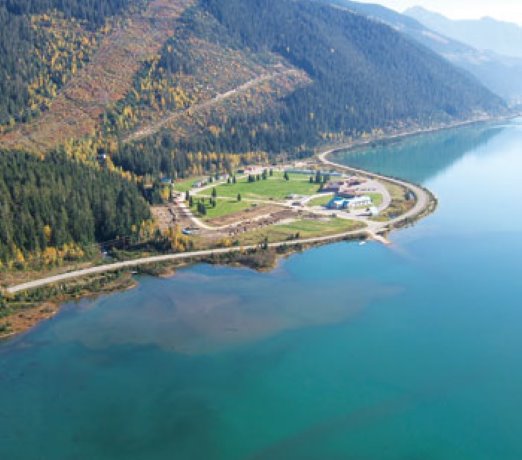BC Hydro is installing two additional 500-megawatt generating units inside existing turbine bays at the generating station at the Mica Dam, 135 kilometres north of Revelstoke on the Columbia River.
BC Hydro is installing two additional 500-megawatt generating units inside existing turbine bays at the generating station at the Mica Dam, 135 kilometres north of Revelstoke on the Columbia River.
Initiated by the government of W.A.C. Bennett and built between 1965 and 1973, the Mica generating station was designed to be a six-unit facility. But, only four units were constructed and Units 5 and 6 were deferred.
The two new generating units will add about 1,000 megawatts of generation capacity, enough to power 80,000 homes during peak periods of demand, for a total of 2,805 megawatts.
BC Hydro expects Unit 5 will be in service by October 2014 and Unit 6 by 2015.
The total cost of the project is estimated at between $700 and $800 million.
The Mica powerhouse generates about 15 per cent of the electricity produced in B.C. When completed, Mica will have the largest hydro generating capacity in the province.
The construction of each generating unit is completed in a number of sequential steps. It starts with the placement of concrete to form the draft tube, which houses the generating unit.
Next is the installation of a spiral case that houses the turbine and to embed it in concrete. Then, the new turbine is delivered and installed.
Switchgears and other electrical equipment are installed next, followed by commissioning and testing of the generating unit.
The last step in the process is the construction of a new capacitor station near Seymour Arm.
The Mica Unit 5 project requires construction of a new series capacitor station, which is needed to deliver the additional electrical generation reliably.
Chris O’Riley, BC Hydro’s executive vice-president, generation, said that there are two main contractors on the project.
Andritz Hydro, an Austrian company, is supplying and installing the turbine and generating units.
Peter Kiewit Infrastructure Group is completing the concrete work to house the new turbine and generating unit.
The concrete will be produced by a concrete batch plant that is located just below the dam.
Project manager Owen Williams said most of the work on the project to date, which BC Hydro began in 2009, has been site preparation.
“That required building the construction camp and warehouses, developing lay-down, parking and access areas, installing equipment in the powerhouse, erecting a construction crane and building a project office and access to turbine pits,” he said.
Peter Kiewit started work in spring 2011.
“It’s embedding the turbines into the power plant,” Williams said. “It’s still very early in the process, but it’s been laying concrete for the unit’s water passages. It’s starting at the bottom, where the water exits the powerhouse, and working upward from there.”
Andritz has delivered the fabricated steel sections that comprise the steel-lined water passages, which are water pipes measuring 30 feet in diameter.
In 2012, Kiewit and Andritz will continue to build the infrastructure used to bring water into and out of the powerhouse.
“In about a year’s time, we’ll install the turbines, then build the generators,” Williams said.
The next tender, which will be let in spring 2012, is the completion tender.
“That contract is for electromechanical work – piping, wiring and control systems,” Williams said. “It’s the last big contract on the project.”
The project is expected to create 800 person-years of construction-related employment.
In mid-December 2011, there were about 200 workers on site.
“There’s lots of work available for craft labor, construction managers and medium-size sub-contractors,” Williams said.
In March, BC Hydro announced it was offering $60,000 in trades training programs – carpentry, apprenticeship and pre-apprenticeship training – to colleges in Revelstoke, Golden, Valemount and Nakusp.
The funding supplements $60,000 in assistance that BC Hydro made in 2009.
The purpose of the funding is to help build trades capacity in local communities and is intended to be of direct benefit to the project. BC Hydro said that the trades training programs have assisted 46 students.
The project has its share of challenges.
The underground powerhouse is a tight working space and the construction work needs to be carefully integrated with the operations of the power station. Every detail of the project has been carefully choreographed to ensure there is enough room for equipment and supplies.
The project is at the far end of the operating power station, which means that concrete and all the other components, that make up the generating units, need to be transported – very carefully – past the four operating units until the project is completed.
“The operating side needs to be kept separate from the construction side,” explained O’Riley.
“And dust and particles have to be kept down so they don’t interfere with the operating equipment.”



Recent Comments
comments for this post are closed